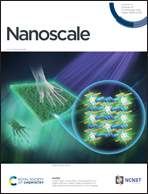ROS-mediated liposomal dexamethasone: a new FA-targeted nanoformulation to combat rheumatoid arthritis via inhibiting iRhom2/TNF-α/BAFF pathways†
Abstract
Rheumatoid arthritis (RA) is an autoimmune inflammatory disorder that has seriously affected human health worldwide and its current management requires more successful therapeutic approaches. The combination of nanomedicines and pathophysiology into one system may provide an alternative strategy for precise RA treatment. In this work, a practical ROS-mediated liposome, abbreviated as Dex@FA-ROS-Lips that comprised synthetic dimeric thioether lipids (di-S-PC) and a surface functionalized with folic acid (FA), was proposed for dexamethasone (Dex) delivery. Incorporation with thioether lipids and a FA segment significantly improved the triggered release and improved the triggered release of cytotoxic Dex as well as the active targeting of RA, altering its overall pharmacokinetics and safety profiles in vivo. As proof, the designed Dex@FA-ROS-Lips demonstrated effective internalization by LPS-activated Raw264.7 macrophages with FA receptor overexpression and released Dex at the inflammatory site due to the ROS-triggered disassembly. Intravenous injection of this Dex@FA-ROS-Lips into adjuvant-induced arthritis (AIA) mice led to its incremental accumulation in inflamed joint tissues and significantly alleviated the cartilage destruction and joint swelling via suppression of proinflammatory cytokines (iRhom2, TNF-α and BAFF), as compared to the effect of commercial free Dex. Importantly, the Dex@FA-ROS-Lips nanoformulation showed better hemocompatibility with less adverse effects on the body weight and immune organ index of AIA mice. The anti-inflammatory mechanism of Dex@FA-ROS-Lips was further studied and it was found that it is possibly associated with the down-regulation of iRhom2 and the activation of the TNF-α/BAFF signaling pathway. Therefore, the integration of nanomedicines and the RA microenvironment using multifunctional Dex@FA-ROS-Lips shall be a novel RA treatment modality with full clinical potential, and based on the enhanced therapeutic effect, the signaling pathway of iRhom2/TNF-α/BAFF reasonably explained the mechanism of Dex@FA-ROS-Lips in anti-RA, which suggested a molecular target for RA therapy and other inflammatory diseases.



 Please wait while we load your content...
Please wait while we load your content...